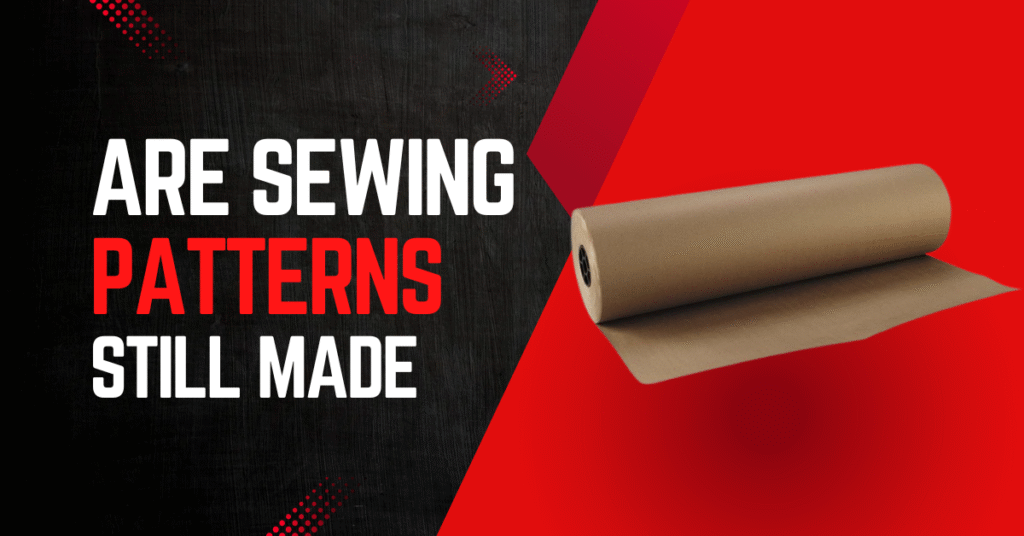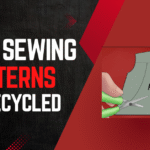Yes, sewing patterns are still made and widely available both in physical stores and online. Major brands like Simplicity, McCall’s, and indie designers continue to release new patterns for garments, accessories, and crafts. Digital downloads have expanded access, making sewing patterns more convenient than ever.
The legacy of sewing patterns and the Big 4
How Simplicity, McCall, Butterick, and Vogue shaped home sewing
The story of modern sewing begins with Ebenezer Butterick, a Massachusetts tailor who revolutionized home sewing in 1863 by creating the first graded paper sewing pattern. His groundbreaking innovation offered every pattern in a series of standard, graduated sizes. Initially, Butterick’s family cut and folded these first patterns by hand before selling them from their home.
James McCall followed in 1870, establishing the McCall Pattern Company in New York City. Meanwhile, Simplicity Pattern Co. entered the market in 1927 with a clear mission: to produce easy-to-use, lower-priced patterns. Additionally, Vogue Pattern Service emerged in 1899 as a spinoff of Vogue Magazine’s weekly pattern feature.
The rise and fall of the Simplicity Patterns company
Throughout most of the 20th century, these companies thrived independently. Simplicity became one of the fastest-growing pattern companies, establishing offices across the United States, Canada, London, and Australia. Furthermore, their patterns were sold in over 60 countries.
The consolidation began in earnest when Vogue Pattern Service was sold to Butterick Publishing in 1961. Subsequently, in 2017, CSS Industries acquired both Simplicity Creative Group for $64 million and McCall Pattern Company for $14 million, bringing all legacy American sewing pattern brands under one corporate roof.
Why these brands mattered to generations of sewists
The Big 4 fundamentally transformed home sewing through continuous innovation. Butterick began publishing The Delineator fashion magazine in 1873 to publicize their patterns. Vogue patterns became synonymous with high fashion, especially after introducing Christian Dior’s revolutionary “New Look” collection in 1947.
During World War II, when commercial sewing machines were manufacturing military supplies, Vogue Patterns adapted by offering designs requiring fewer pieces and less material. By 1944, an estimated 82% of American women were home sewists, with sewing becoming both a practical necessity and a patriotic act.
What led to the decline of traditional pattern companies
The traditional pattern industry has faced unprecedented challenges in recent years, culminating in a series of shocking developments that threaten its very existence.
Private equity and the $1 sale of Simplicity Creative Group
In May 2025, the IG Design Group sold its Design Group Americas division (DGA)—home to Simplicity, McCall, Butterick, and Vogue patterns—to Hilco Capital Group for just $1, plus 75% of future proceeds from asset sales. This remarkably low price reflects how dramatically the value of these once-thriving companies has diminished.
Unfortunately, private equity ownership had already spent years extracting value from these pattern brands. As one industry observer noted, “Private equity exists to swoop in, buy, extract as much cash from a company as possible, saddle it with debt and then liquidate”.
Joann’s bankruptcy and its ripple effect
In January 2025, Joann Fabrics filed for its second bankruptcy in less than a year, ultimately leading to the company’s liquidation. As a consequence, the sewing pattern companies lost one of their major retail partners. DGA specifically cited “the bankruptcy and liquidation of one of the Debtors’ major customers, Jo-Ann Stores, LLC” as having “severely impacted [its] sales performance and revenue”. This ripple effect continues to devastate the craft and sewing sectors.
Tariffs, manufacturing shifts, and market softening
External economic factors further accelerated the decline. According to court documents, recently imposed trade tariffs “increased operational costs, affected pricing strategies, and contributed to reduced customer orders”. Ultimately, DGA filed for Chapter 11 protection on July 10, 2025, and began winding down operations.
The pattern companies also faced a progressively softening market over several years. In contrast to their heyday, when sales grew at 10% annually, the industry would now be grateful for even a 4% growth rate.
The shift from paper to digital: what’s replacing tissue patterns
As traditional pattern companies struggle, a digital revolution has transformed how home sewists access and use sewing patterns. PDF patterns have grown from a niche alternative to a dominant format in the sewing community.
The rise of PDF and projector sewing patterns
Digital sewing patterns now account for approximately 65% of all pattern sales, with their popularity increasing steadily over the past five years. Alongside downloadable PDFs, projector patterns have emerged as an innovative solution—allowing sewists to project pattern pieces directly onto fabric. This method eliminates the need for printing and assembly entirely, saving both time and resources.
Many sewists now own dedicated projectors mounted above cutting tables, representing a significant investment in their craft. The immediacy of digital patterns offers another advantage: instant gratification. After purchase, patterns become available for immediate download rather than requiring days or weeks for shipping.
Challenges with printing and assembling digital patterns
Nevertheless, digital patterns come with their own hurdles. The average PDF pattern requires 30-45 minutes to assemble, plus additional time for printing. Larger patterns can span 40+ pages, necessitating careful alignment and taping. Consequently, some sewists outsource printing to copy shops offering large-format services—an additional expense that partially offsets the savings of digital patterns.
Why some sewists still prefer paper patterns
Despite digital options, approximately 35% of sewists remain loyal to traditional paper patterns. Many cite the tactile experience of working with tissue paper as irreplaceable. Furthermore, vintage pattern collectors value the historical aspect of original paper patterns, with some rare designs fetching hundreds of dollars among collectors.
Storage presents another consideration—a digital library requires virtually no physical space, while paper patterns demand significant storage solutions. Yet some sewists find physical patterns easier to browse and organize than digital files.
The role of indie sewing pattern companies
Independent pattern companies have flourished in the digital landscape, offering specialized designs often overlooked by traditional manufacturers. These indie businesses typically operate with smaller teams and lower overhead, allowing them to create niche patterns for specific needs.
Many indie companies have embraced size inclusivity, offering extended sizing beyond what traditional patterns typically provide. Additionally, they’ve pioneered innovations in instruction quality—offering video tutorials, detailed illustrations, and responsive customer support that larger companies struggled to match.
What the future holds for sewing patterns in 2025 and beyond
Despite industry upheaval, the pattern landscape continues to evolve in surprising ways. A close examination of current offerings reveals how this craft is adapting to modern challenges.
Will McCall sewing patterns still be available?
Looking at recent releases, McCall’s patterns are indeed still being produced in 2025. The brand continues to publish seasonal catalogs, including Spring and Summer 2025 collections that remain available for purchase. Sewists can still buy complete McCall’s Pattern catalogs to browse at their convenience—a practice many enthusiasts consider essential for inspiration.
One notable shift appears in customer feedback: “Many of the KnowMe designs are now pdf only,” notes one reviewer, highlighting the gradual transition toward digital-only availability for certain pattern lines. Yet at the same time, the continued publication of physical catalogs suggests McCall’s remains committed to serving sewists who prefer traditional formats.
The importance of preserving pattern printing infrastructure
Physical catalogs represent more than just convenience—they embody a craft tradition worth preserving. “Can’t tell you how much I love the convenience of having a physical catalog to shop at home with. Great for inspiration, too!” writes one enthusiast. This sentiment echoes throughout the sewing community, where tactile experience remains integral to creative process.
Although printing volumes have decreased dramatically from historical highs, maintaining pattern printing infrastructure serves both practical and cultural purposes. Once this specialized production capacity disappears, rebuilding it would prove nearly impossible.
How the community is adapting and innovating
Since 2020, the sewing community has undergone remarkable evolution. Many sewists who began making masks during the pandemic have expanded their skills considerably, now embracing garment sewing with enthusiasm. This shift toward creating personalized wardrobes stems from disappointment with mass-produced clothing that rarely fits properly.
Sustainability stands at the forefront of modern sewing trends, with growing interest in organic cotton, linen, bamboo-based textiles, and even cork for bag-making. These materials not only reduce environmental impact but align with the broader movement toward mindful living.
Moreover, today’s sewists prioritize quality and self-expression, often investing in premium fabrics despite higher costs, seeking garments that provide both perfect fit and genuine joy. This community adaptation demonstrates how traditional crafts can evolve while preserving their essential character.
Conclusion
The sewing pattern landscape has undeniably transformed since its golden era. Despite the shocking $1 sale of the Simplicity Creative Group and ongoing industry challenges, sewing patterns continue to exist in 2025—albeit in evolving forms. Traditional paper patterns, though diminished in production volume, still hold significant value for many sewists who appreciate their tactile qualities and historical significance.
Meanwhile, digital patterns have emerged as the dominant format, accounting for approximately 65% of all pattern sales. This shift reflects broader changes in consumer behavior and technological adoption. PDF and projector patterns offer convenience and immediacy that paper patterns simply cannot match, though they present their own unique challenges.
Independent pattern companies deserve significant credit for revitalizing the industry through digital innovation, size inclusivity, and specialized designs. These smaller businesses have filled crucial gaps left by traditional manufacturers while adapting quickly to changing market demands.


